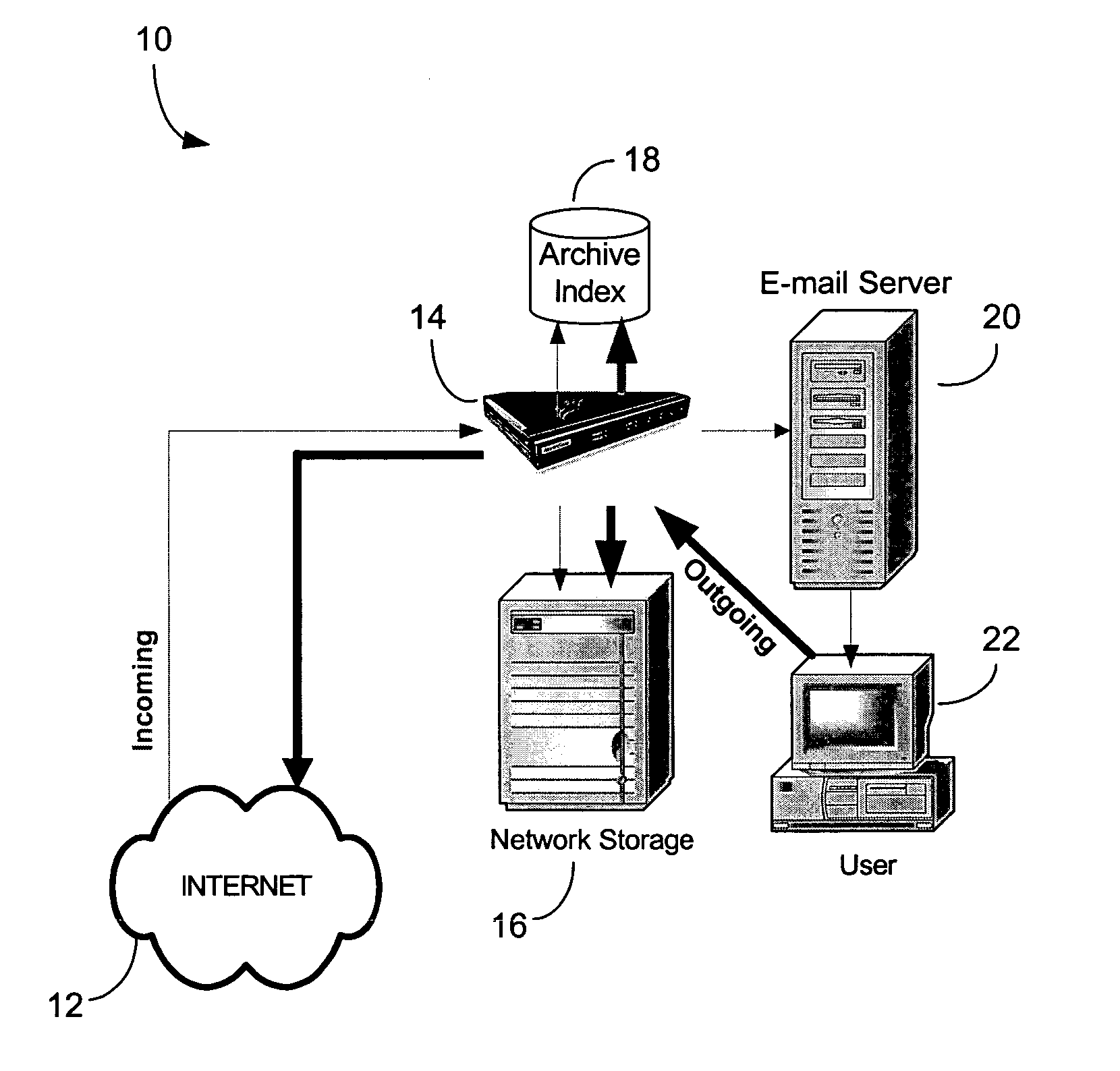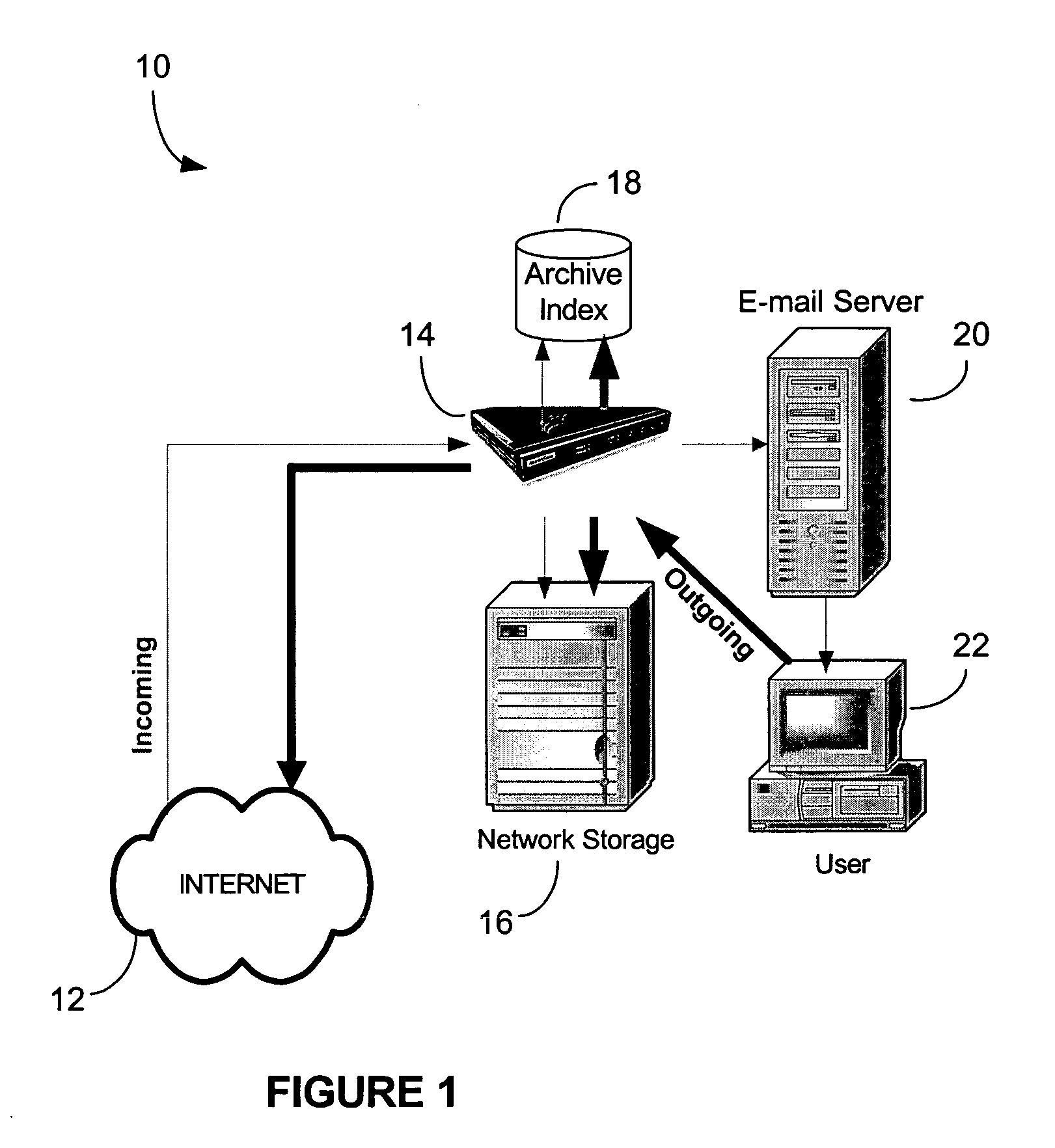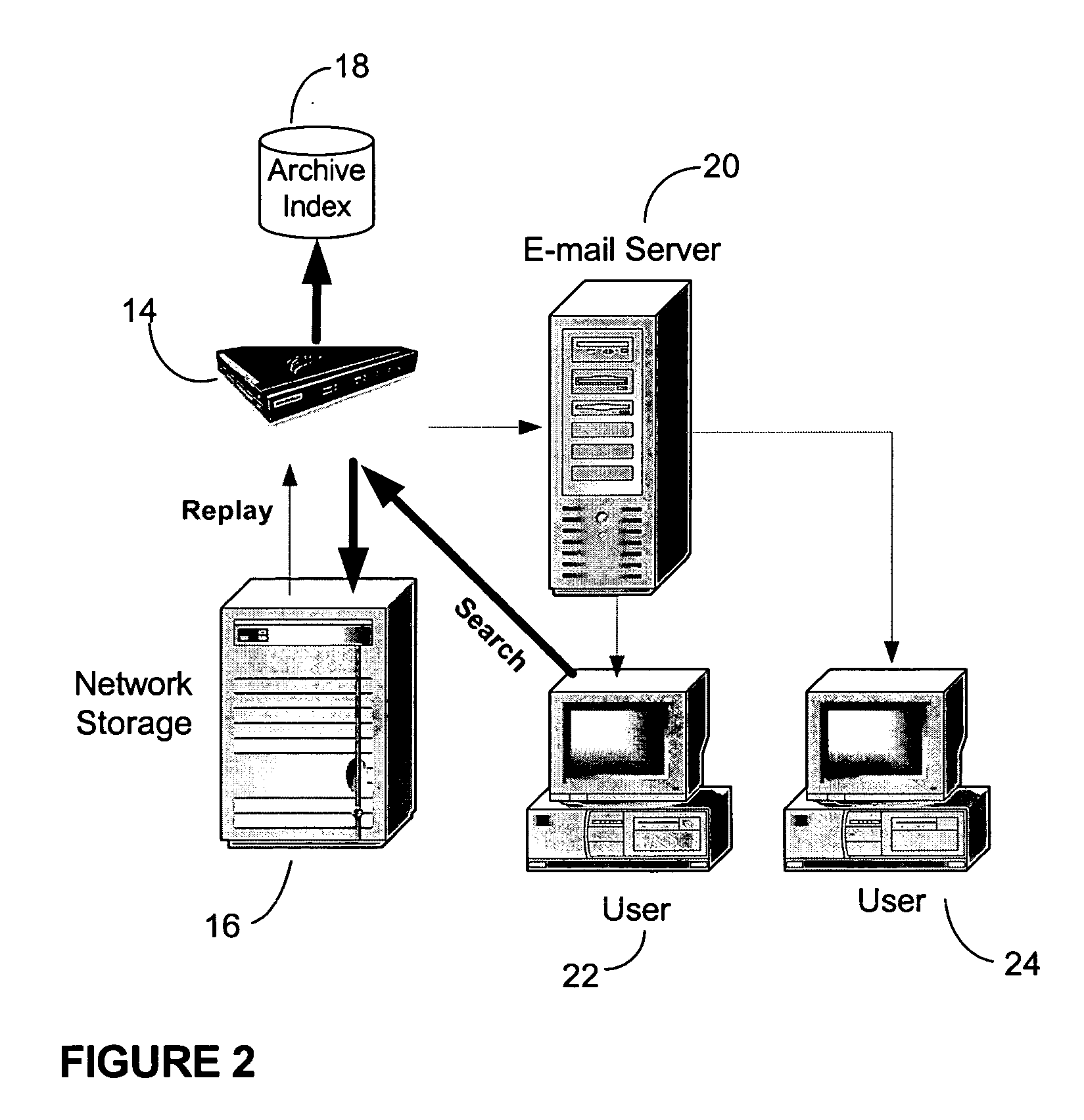Method of and system for management of electronic mail
a technology of electronic mail and system management, applied in the field of electronic communication systems, can solve the problems of excessive messaging load, unimaginable to most system managers, and unwieldy scope of electronic mail or e-mail use, and achieve the effect of reducing the burden on users and administrators, and reducing the burden on administrators
- Summary
- Abstract
- Description
- Claims
- Application Information
AI Technical Summary
Benefits of technology
Problems solved by technology
Method used
Image
Examples
Embodiment Construction
[0064] The following description is of a preferred embodiment. A number of terms are used in the description of this preferred embodiment which are defined as follows. It would be understood to one skilled in the art that the use of these terms would not restrict the application of the invention:
[0065] Archive: An “archive” or “archival storage” refers to a storage resource that is accessible to users or indirectly to users through the Replay System (which has direct access to the storage resource). In the context of e-mail content, an “archive” can also be implemented as a corporate message repository, sometimes called an “active archive”.
[0066] Archive Database: The Archive Database is a database that holds records containing index or metadata describing each e-mail messages in the archive. The assumption is that this data is gathered automatically as messages pass through the e-mail archiving process.
[0067] Carrier Message: The Carrier Message is a message generated by the Rep...
PUM
 Login to View More
Login to View More Abstract
Description
Claims
Application Information
 Login to View More
Login to View More - R&D
- Intellectual Property
- Life Sciences
- Materials
- Tech Scout
- Unparalleled Data Quality
- Higher Quality Content
- 60% Fewer Hallucinations
Browse by: Latest US Patents, China's latest patents, Technical Efficacy Thesaurus, Application Domain, Technology Topic, Popular Technical Reports.
© 2025 PatSnap. All rights reserved.Legal|Privacy policy|Modern Slavery Act Transparency Statement|Sitemap|About US| Contact US: help@patsnap.com



